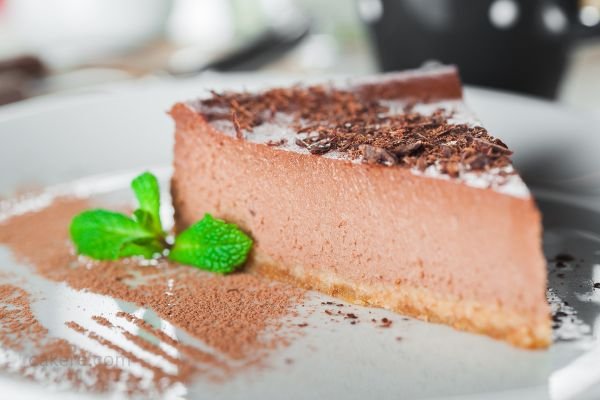When it comes to cakes, especially those that have been carefully decorated, the question of whether you can freeze them may arise. Freezing a cake after decorating it can be a convenient option in certain situations.

Why Would You Want to Freeze a Decorated Cake?
There are several reasons why you might consider freezing a decorated cake. Firstly, if you have a special occasion coming up and you want to prepare in advance, freezing a cake allows you to do so without compromising its taste or appearance.
Additionally, if you have leftover cake from a celebration, freezing it ensures that it can be enjoyed later without going to waste.
Factors to Consider Before Freezing a Decorated Cake
Before freezing a decorated cake, there are a few important factors to consider. These factors will help ensure that the cake maintains its taste, texture, and visual appeal after thawing.
- Cake Ingredients and Texture: Not all cakes freeze well. Generally, cakes with sturdy textures, such as butter cakes or pound cakes, freeze better than those with delicate textures, such as sponge or chiffon cakes. Dense cakes tend to retain moisture better during freezing and thawing.
- Frosting and Decoration Types: The type of frosting and decorations on the cake can affect its suitability for freezing. Buttercream and cream cheese frostings typically freeze well, while whipped cream or meringue frostings may not hold up as well. Similarly, certain delicate decorations like fresh flowers or fragile sugar decorations may not survive the freezing process.
- Storage Containers and Techniques: Proper storage containers and techniques are crucial for preserving the quality of a frozen decorated cake. It is recommended to use airtight containers or wrap the cake tightly in plastic wrap and foil to prevent freezer burn and moisture loss.
Step-by-Step Guide to Freezing a Decorated Cake
- Preparing the Cake: Allow the cake to cool completely before freezing. If the cake has multiple layers, it’s advisable to remove any fillings that may not freeze well. Ensure that the cake is properly leveled and stable.
- Wrapping the Cake Properly: Start by wrapping the cake with a layer of plastic wrap, making sure it is tightly sealed to prevent air and moisture from entering. Follow this by wrapping the cake with a layer of aluminum foil for additional protection. For added security, place the wrapped cake in an airtight container.
- Freezing and Storage Duration: Place the wrapped cake in the freezer and store it at a constant temperature of 0°F (-18°C) or below. The cake can typically be stored in the freezer for up to three months without significant loss of quality.
Thawing and Serving a Frozen Decorated Cake
When you’re ready to thaw and serve a frozen decorated cake, it’s essential to follow the proper thawing methods to maintain the cake’s integrity.
- Thawing in the Refrigerator: The recommended method for thawing a decorated cake is to transfer it from the freezer to the refrigerator. Place the wrapped cake in the refrigerator and allow it to thaw slowly overnight or for approximately 24 hours. This gradual thawing process helps prevent condensation and maintains the cake’s texture.
- Avoiding Direct Sunlight and Heat: During the thawing process, it’s crucial to keep the cake away from direct sunlight or heat sources, as they can cause the cake to thaw unevenly and affect its overall quality.
- Removing the Wrapping: Once the cake is completely thawed, carefully remove the wrapping to avoid damaging the decorations. Allow the cake to come to room temperature before serving.
It’s important to note that some cakes may experience slight changes in texture after freezing and thawing.
If you followed the proper freezing and thawing techniques, the cake should still taste delicious and maintain its visual appeal.
Tips and Tricks for Freezing and Preserving Cake Decorations
- Labeling and Dating: When freezing a decorated cake, it’s helpful to label the container or wrapping with the cake’s name and the date it was frozen. This practice ensures that you can easily identify and keep track of your frozen creations.
- Separate Layers and Decorations: If your cake has multiple layers or delicate decorations, consider freezing them separately. This approach helps preserve the decorations’ integrity and allows for more convenient serving and customization when thawed.
- Protecting Delicate Decorations: If your cake features delicate decorations that may not survive freezing, such as fresh flowers or intricate sugar work, it’s best to add them to the cake after thawing. Store the decorations separately in a cool, dry place and place them on the cake just before serving.
- Frequent Freezing and Thawing: While it is generally safe to freeze and thaw a cake once, repeated freezing and thawing can affect its quality. It’s advisable to consume the cake within a reasonable time frame to ensure the best taste and texture.
FAQs
Fondant decorations can be frozen, but they may become softer and lose their shape upon thawing. It’s best to add fondant decorations after thawing the cake.
Cream cheese frosting freezes well and can be used on a frozen cake. However, it’s important to thaw the cake in the refrigerator to maintain the frosting’s texture.
Whipped cream does not freeze well and may become watery or lose its consistency upon thawing. It’s recommended to add whipped cream as a topping just before serving.
A properly frozen and stored decorated cake can be kept in the freezer for up to three months without significant quality loss.
Conclusion
In conclusion, it is indeed possible to freeze a cake after decorating it, but certain considerations must be taken into account.
The type of cake, frosting, and decorations play a significant role in determining whether a cake is suitable for freezing.
Proper wrapping, storage, and thawing techniques are vital to preserving the cake’s taste and appearance.
